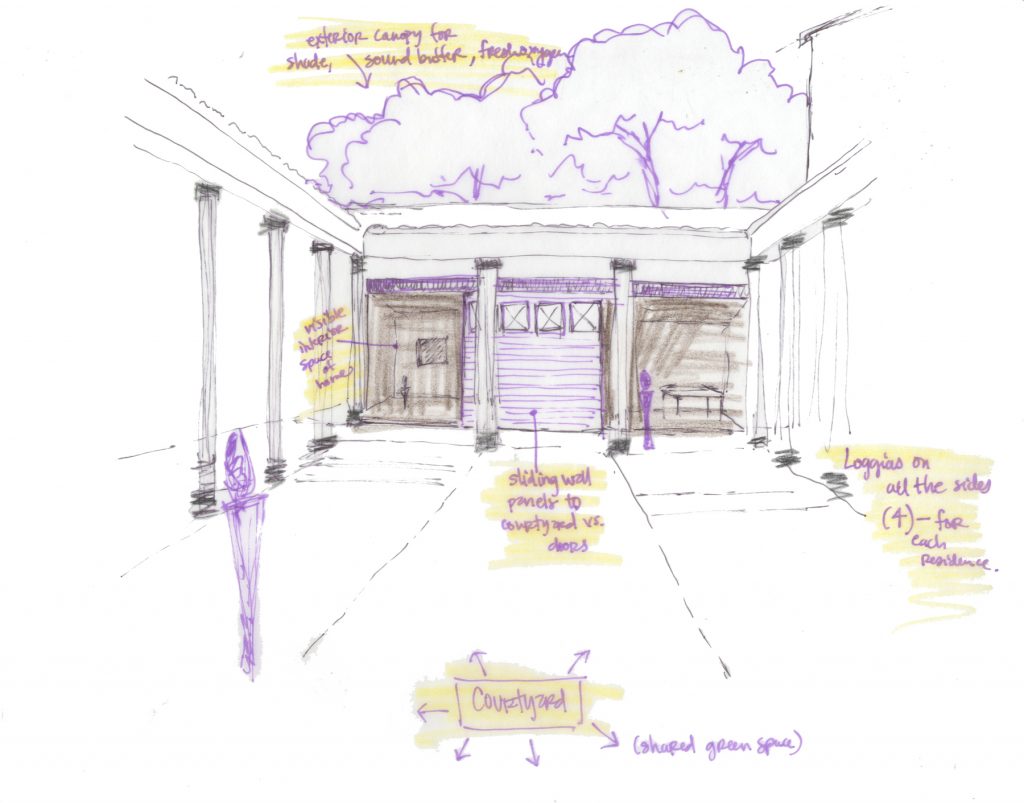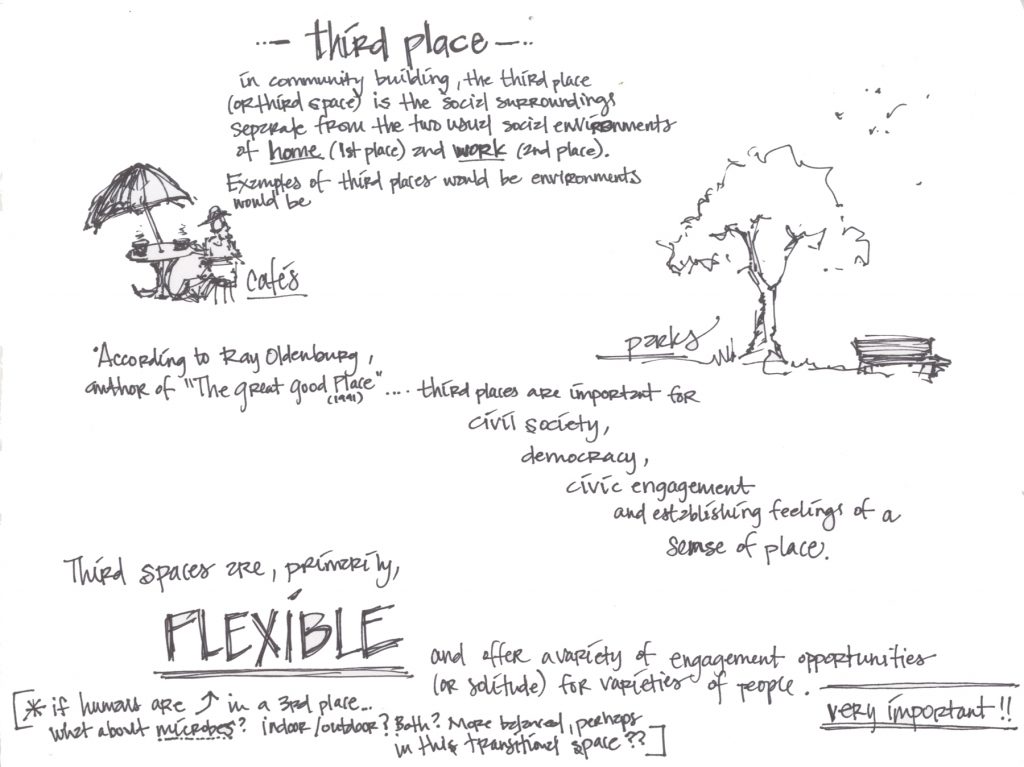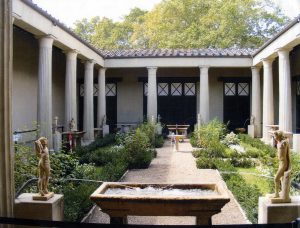During the winter term at University of Oregon, I led a design-oriented microbiome course for graduate and undergraduate students from a variety of disciplines (Architecture, Environmental Studies, Landscape Architecture, and Planning). Just for the record, these design students were VERY enthusiastic to learn about microbiome science, although they were somewhat disconcerted to find out how nascent the field is. For the final exam, students in the course were tasked to do a design charrette (i.e. a brief but intense design exercise) focused on solving specific design problems related to creating “healthier” built environment microbiomes.
Below is an example of what one Landscape Architecture undergraduate student came up with to improve typical apartment units, which are frequently closed off from the outdoors and are likely to have a very “human-looking” indoor microbiome. This particular student inverted the relationship between the apartment units and their garden/yard, using ancient Roman courtyard homes as a precedent. The idea was to create a safe, sheltered, and unpolluted interior green space that would entice residents to open up their doors and windows for natural ventilation, while also increasing social interaction. This is in contrast to the design of most apartment complexes, where there is often an unused sward of mown grass exterior to the buildings. In terms of microbes, her concept was supported by studies like Hanski et al. (2012), which showed that species richness of native flowering plants around the home was negatively correlated with atopy and that atopy was negatively correlated with diversity of Gammaproteobacteria on residents’ skin. Another linkage in her design proposal was using natural ventilation to make the indoor microbiome more similar to the immediate outdoor microbiome (e.g., Meadow et al., 2013).
Now, if we only knew enough to specify exactly which plant species and how many of them to put in that courtyard garden, I could really get those Landscape Architecture students motivated!



One thought on “Built environment microbiome design charrette”